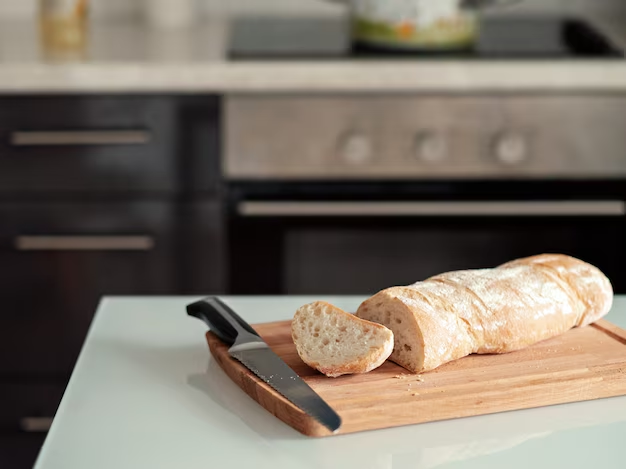Should You Refrigerate Bread? Unpacking the Best Bread Storage Practices
When it comes to storing bread, many people find themselves perplexed by varying advice and differing personal preferences. Amidst the options of room temperature, refrigeration, and freezing, the unanimous goal remains preserving that fresh, delightful texture we all crave. But, is refrigerating bread a savvy way to extend its shelf life, or does it merely hasten its decline into staleness? Let’s unravel this conundrum by exploring where bread storage in the refrigerator fits among other methods, why it’s often discouraged, and any exceptions to the rule.
The Science Behind Bread Staling
Understanding why bread goes stale is crucial to making informed storage choices. Bread stales primarily due to a process known as retrogradation, where the starch molecules in the bread crystallize over time. This phenomenon happens faster in cooler conditions—which unfortunately includes refrigeration temperatures. As a result, bread stored in the fridge can become dry and unappealing quicker compared to being stored at room temperature.
The Role of Moisture
Excess moisture is bread’s arch-nemesis, as it accelerates mold growth. Refrigeration might reduce humidity, thus slowing mold but at the cost of hastening staling. Proper storage, therefore, involves a delicate balance between minimizing moisture and maintaining texture.
Why You Should Think Twice About Refrigerating Bread
Despite the impulse to refrigerate bread to keep it "fresh," experts generally advise against it. Here’s a breakdown of why refrigeration might not be the best bread storage option:
Faster Staling Process
- 🌡️ Temperature Impact: Refrigeration accelerates the staling of bread. The cooler temperature prompts the starches to recrystallize and harden, which diminishes the soft texture of bread.
Texture Concerns
- Crumb Quality: The delightful crumb texture, which is essentially the fine grain of the bread, is compromised by refrigeration. The crystallization process causes the moist, airy interior to become firm and dry.
Flavor Degradation
- Loss of Aroma & Taste: Cold temperatures can dull bread’s flavors and aroma, taking away the enticing bakery-fresh experience.
When Refrigeration Might Be Suitable
While refrigeration isn’t ideal for day-to-day bread storage, there are certain exceptions where refrigeration becomes a viable solution:
Specialty and Hearty Breads
- Rye, Pumpernickel, and Sourdough: These breads are dense and lower in moisture, which offers a more extended shelf life even in the fridge compared to delicate, white breads.
Short-Term Storage
- Immediate Consumption: If you plan to consume bread within a day or two, refrigeration can be an option to avoid mold growth, particularly in humid environments.
Mitigating Moisture in Large Loaves
- Partial Storage: If you’ve bought a large loaf, consider slicing off a portion to leave at room temperature and refrigerate the remainder—ideally wrapped to prevent drying, to be toasted later.
Alternative Bread Storage Techniques
Were you hoping for something other than room temperature or freezing? Here are proven methods to consider:
Room Temperature Storage
- Wrap and Contain: Store bread in breathable packaging like a paper bag or a cloth bread bag, and stash it in a cool, dry area.
- Bread Box: A classic bread box offers a good balance between air circulation and protection from drying out.
Freezing for Longevity
- Freeze Your Bread: When longevity is the goal, freezing provides optimal freshness retention. Wrap the bread tightly in plastic or aluminum foil, then place it in a freezer-safe bag to protect against freezer burn.
- Slice Before Freezing: Pre-slice bread before freezing it to easily grab just what you need without defrosting the entire loaf.
Bread Revival Techniques
If your bread has suffered the unfortunate effects of improper storage or just a prolonged stint in the fridge, don’t despair. Here’s how to revive it:
Refreshing Stale Bread
- 🥖 Reheating: Lightly mist the bread with water, wrap it in foil, and bake it in an oven preheated to 350°F for about 10-15 minutes. This restores moisture and softens the crumb.
- Toasting: A quick toast can revive the outside’s crunch, enhance flavors, and mask minor staleness of refrigerated bread.
Avoiding Mold
- Inspect Often: Always check bread for signs of mold, particularly if stored beyond a week. When in doubt, throw it out, as mold can spread invisibly.
Practical Tips for Maximizing Bread Freshness
To ensure the best possible bread storage practices, making informed decisions based on bread type and your consumption pattern is crucial.
Checklist for Bread Storage Success
- 🔹 Bread Type Consideration: Tailor storage method to bread type—basic white, whole grain, or artisanal, all benefit from different storage styles.
- 🔹 Consumption Planning: Gauge how quickly you consume bread; opt for room temperature for quick use, and freezing for long term.
- 🔹 Environment Awareness: In humid climates, mold growth is more of a concern, potentially justifying short breastfeeding in the fridge.
- 🔹 Use Alternatives: Keep various techniques in your arsenal—room temperature for daily use, freezing for excess bread.
Skimmable Actions for Bread Lovers
Here’s a visual summary to help you make swift bread storage decisions:
- 🏠 Room Temperature: Best for loaves you’ll finish within a few days.
- 🥶 Freezer Safe: For long-term storage without compromising quality.
- 🚫 Refrigerator Risk: Use sparingly; opt for short-term storage of certain dense breads if necessary.
- 👉 Daily Inspections: Check for staleness and mold routinely to enjoy bread at its best.
Closing Thoughts
By understanding the science of bread staling and storage options, you can ensure that each slice is savored at its freshest. While the refrigerator might offer a quick fix to extend shelf life, considering alternative storage methods often provides a better balance between freshness and longevity. With these strategies, bread enthusiasts can relish the delightful experience of fresh bread every time.
